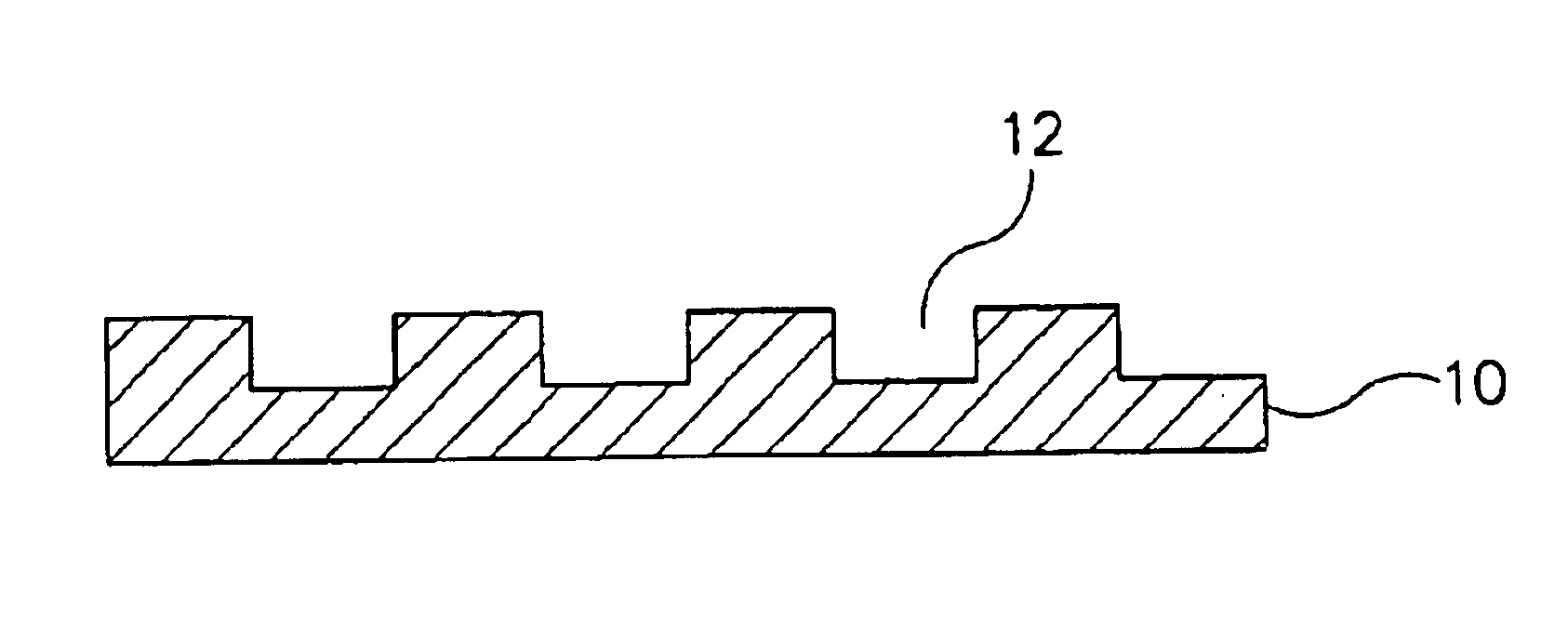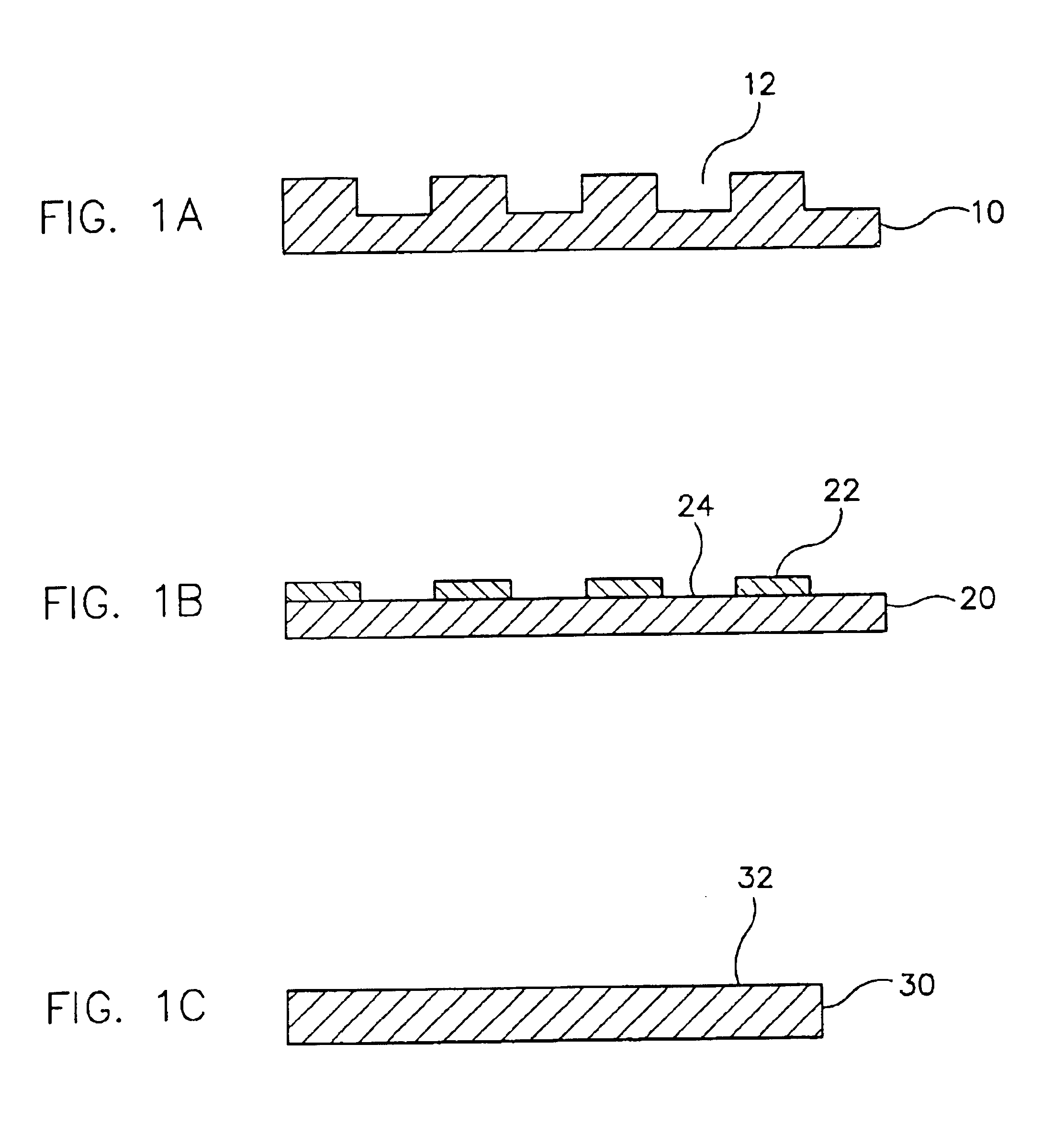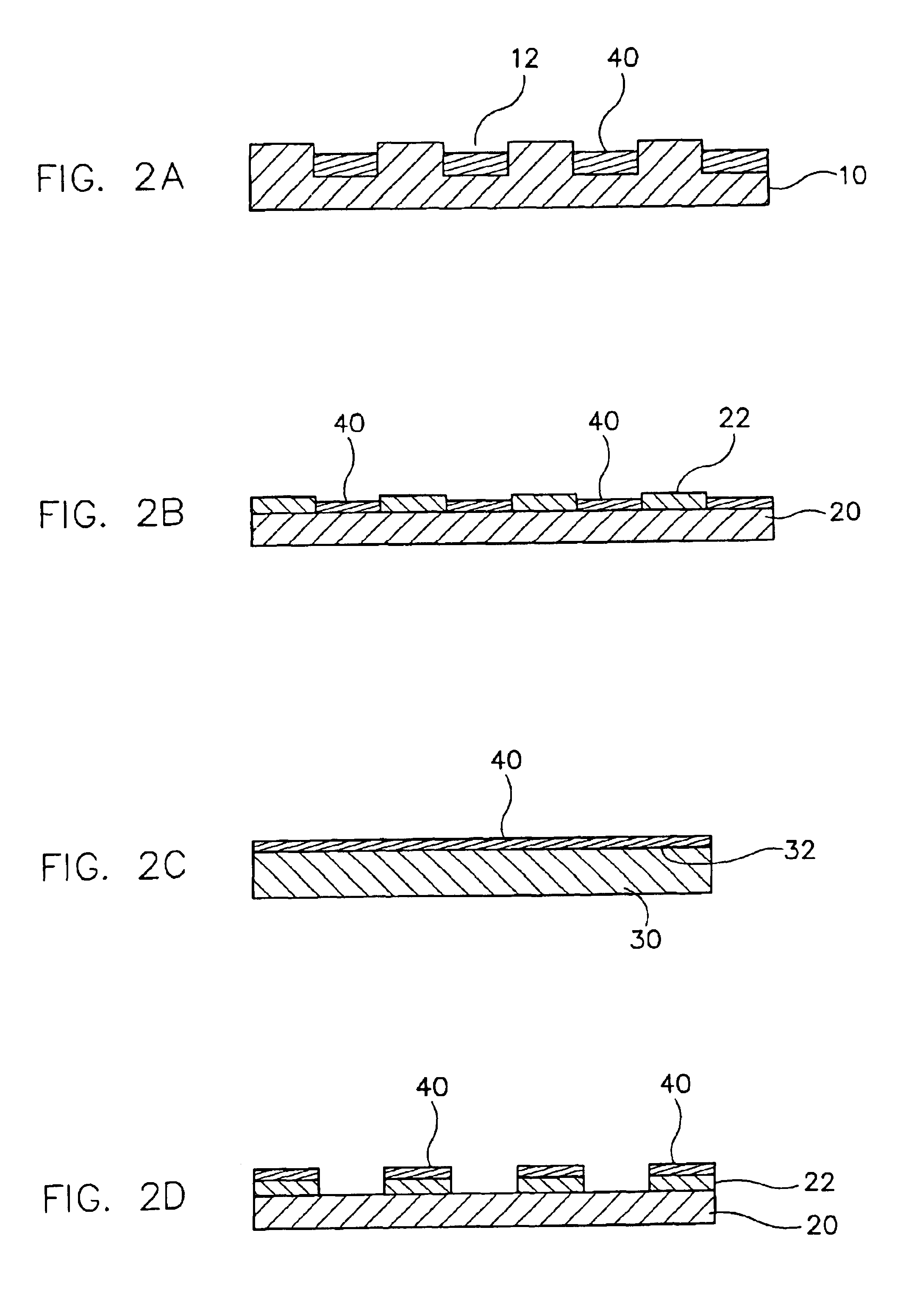Method and system for the in situ synthesis of a combinatorial library of supported catalyst materials
a technology of supported catalyst materials and in situ synthesis, which is applied in the field of methods for the creation of an array of materials, can solve the problems of difficult to predict a priori the physical properties of a particular three-dimensional structure, and achieve the effect of high throughpu
- Summary
- Abstract
- Description
- Claims
- Application Information
AI Technical Summary
Benefits of technology
Problems solved by technology
Method used
Image
Examples
embodiments
Alternative Substrate Embodiments
[0077]In one preferred embodiment, the components or materials in the individual regions should be prevented from moving to adjacent regions. Most simply, this can be ensured by leaving a sufficient amount of space between the regions on the substrate so that the various components cannot interdiffuse between reaction regions. Moreover, this can be ensured by providing an appropriate barrier between the various regions on the substrate. In one approach, a mechanical device or physical structure defines the various regions on the substrate. A wall or other physical barrier, for example, can be used to prevent the reactant components in the individual reaction regions from moving to adjacent reaction regions. This wall or physical barrier may be removed after the synthesis is carried out. One of skill in the art will appreciate that, at times, it may be beneficial to remove the wall or physical barrier before screening the array of materials.
[0078]In a...
examples
[0088]The starting reagents are purchased from commercial sources and used as received unless otherwise noted. Some alkoxide components are handled in an argon or nitrogen inert atmosphere glove box (from Vacuum Atmospheres). However, the techniques of this invention generally allow the synthesis and manipulation of these components in air.
[0089]A catalyst library is prepared on a quartz substrate which contains a plurality of regions. The preparation of the substrate is described, for instance, in publication WO 98 / 15969, (e.g., page 36), incorporated by reference herein. For this specific application a 3″×3″ square quartz wafer is silanized using CH3(CH2)7SiCl3. An array of 16×16 wells is formed in the wafer by bead blasting using a suitable mask. Each well is 2.2 mm in diameter and deep enough so that all material subsequently deposited in that well is below the top surface of the wafer. For the current example the well depth is about 0.1 mm.
[0090]One or more of a powder carrier ...
example 2
[0098]An array of materials is prepared for screening. The first component is a metal oxide suspended in a slurry, which is delivered to a 3×3 inch quartz wafer having 256 bead blasted wells defined therein. For deposition of a slurry of 250 micrograms of zirconium oxide (FZO 936 / 01; MEI Chemicals), the depth of the wells should be about 0.067 mm for a 2.2 mm spot diameter; and about 0.111 mm for a 1.5 mm spot diameter (which is achieved by about 16 passes with a hand held bead blaster). The metal oxide has a particle size of about 1-2 microns, a surface area of about 80 to about 110 square meters per gram, a pore diameter of about 8-9 nm and a pore volume of about 0.15-0.2 cc / g. About 0.50 g of the oxide is slurried in about 3 ml of a solvent (e.g., for a 2.2 mm spot: 40% ethylene glycol, 30% water and 30% 2-MEO; for a 1.5 mm spot: 40% ethylene glycol and 60% water). About 1.5 microliters is dispensed.
[0099]The slurry is deposited in the wells in parallel, or semi-parallel using an...
PUM
| Property | Measurement | Unit |
|---|---|---|
| area | aaaaa | aaaaa |
| area | aaaaa | aaaaa |
| area | aaaaa | aaaaa |
Abstract
Description
Claims
Application Information
 Login to View More
Login to View More - R&D
- Intellectual Property
- Life Sciences
- Materials
- Tech Scout
- Unparalleled Data Quality
- Higher Quality Content
- 60% Fewer Hallucinations
Browse by: Latest US Patents, China's latest patents, Technical Efficacy Thesaurus, Application Domain, Technology Topic, Popular Technical Reports.
© 2025 PatSnap. All rights reserved.Legal|Privacy policy|Modern Slavery Act Transparency Statement|Sitemap|About US| Contact US: help@patsnap.com



